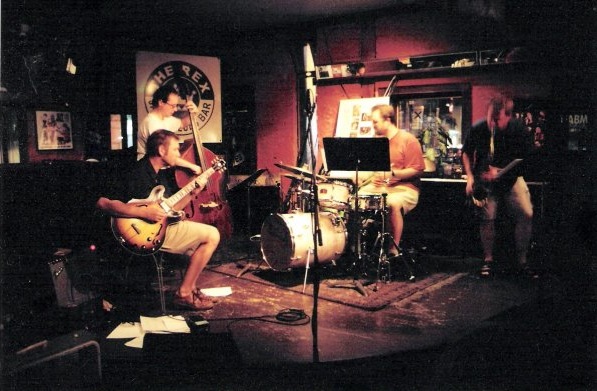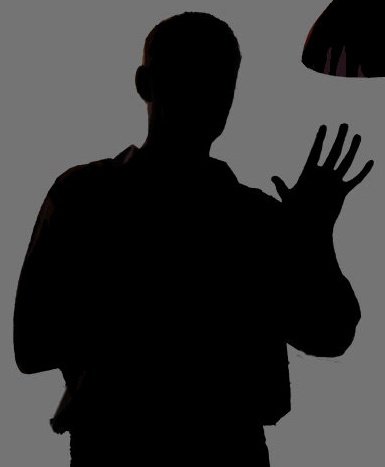Our perception does not happen in a moment, but unfolds over time in concert with our actions.
 I notice the car pulling out of the parking lot, because, in the context of my cycling down the street, it draws my attention to it by the threat its emergence poses to me. Its appearance wells up in my perception, and the clear recognition of what is happened is preceded by a more “mobile” experience in which different significances seem to simmer, waiting for the relevant, salient feature of the situation to show itself decisively. The appearance of the car pulling out “boils over” into my explicit attention, and it also recedes back into oblivion when the sense of threat disappears and I become occupied with something else. Rather than happening in a moment, as if a sensory impression dominated my awareness, the explicit perception is more like a blossoming, a stage of heightened tension in a process that takes varying forms.
I notice the car pulling out of the parking lot, because, in the context of my cycling down the street, it draws my attention to it by the threat its emergence poses to me. Its appearance wells up in my perception, and the clear recognition of what is happened is preceded by a more “mobile” experience in which different significances seem to simmer, waiting for the relevant, salient feature of the situation to show itself decisively. The appearance of the car pulling out “boils over” into my explicit attention, and it also recedes back into oblivion when the sense of threat disappears and I become occupied with something else. Rather than happening in a moment, as if a sensory impression dominated my awareness, the explicit perception is more like a blossoming, a stage of heightened tension in a process that takes varying forms.
The perception of the emerging car, too, is not just visual. I perceive its threatening emergence as much by swerving around it on my bike as I do by looking at it and noting its sensory characteristics. It is my behaviour that defines the context within which the perceptual object becomes significant, and my recognition of that object is itself as much behavioural as it is “cognitive.”
What is presented to our perspective, then, is not so much an object with precise and determinate features that forces itself upon us as it is a kind of invitation, a suitor for our attention. The perceptual situation impinges upon us ambiguously, and what we end up perceiving will be the result of a dynamic interaction between the perceiver and the perceived, a back and forth process of solicitation and responsiveness. Perception is basically the establishing of a mutual “fit,” as the perceiver finds herself compelled to acknowledge the specific demands of the object’s features only once that object has itself passed the test of successfully speaking to the perceiver’s concerns.
The emergence of the perceptual object is thus the result of something like a process of communication. When we do engage with and notice the object, the process of communication continues.
Even when I have noticed a coherent object in front of me—the advancing car, for example—I have not fully perceived what is confronting me. The car itself offers me various paths for further perceptual exploration.
 This is most simply true in that I am only noticing the car from one angle, and the car presents itself to me precisely as something that is not exhausted in that one perspective—I can see the car from the other side, or from the inside, for example. And the options are not just visual—I could drive the car, and I could feel it, either by rubbing it as I wash and wax it or by being knocked over by its weight when it collides with me.
This is most simply true in that I am only noticing the car from one angle, and the car presents itself to me precisely as something that is not exhausted in that one perspective—I can see the car from the other side, or from the inside, for example. And the options are not just visual—I could drive the car, and I could feel it, either by rubbing it as I wash and wax it or by being knocked over by its weight when it collides with me.
The object also offers a different kind of exploration, though. Over time, I can come to understand more clearly what it is that I am dealing with. I can learn more about what a car is, at every level from the material details of its manufacture through the mechanical features of its functioning, on to the practical range of its uses, and ultimately to the metaphysical grasp of its essential nature. This depth of explorability is true of a car, and infinitely more true of the core, given elements that structure and populate our reality—colours, trees, emotions, persons, language.
All this depth of realization again occurs in dialogue with the perceiver. In each case, the greater depth of the thing is revealed in response to a perceiver’s receptivity: these deeper truths take the form of answers to questions, and it is only in the context of the question, only in the context of a responsive openness, that they can appear.
What is striking about this dialogue of question and answer is that we are educated by what we perceive. The objects of our perception have the amazing capacity to function in relation to us rather as another human interlocutor functions towards us in dialogue. In each case—the linguistic dialogue with a person and the perceptual dialogue with the thing—the other communicates to us something novel, something truly “other,” and our engagement is an openness to being transformed beyond our own expectations, being open to a realization we could neither predict nor manufacture on our own.
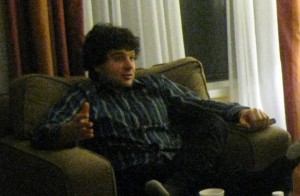 Indeed, the parallel of the everyday process of perception with a human conversation is even stronger. In a conversation, our interlocutor captures our attention and draws us in. Similarly, the object of our perception actually entices us, drawing us more deeply into itself. Typically I feel drawn by the perceptual object to look at it more closely, to examine its contours, to feel its surface, and, indeed, to think about it.
Indeed, the parallel of the everyday process of perception with a human conversation is even stronger. In a conversation, our interlocutor captures our attention and draws us in. Similarly, the object of our perception actually entices us, drawing us more deeply into itself. Typically I feel drawn by the perceptual object to look at it more closely, to examine its contours, to feel its surface, and, indeed, to think about it.
When we read a good story or listen to the tale told by a fine storyteller, we feel that the story attracts us and invites (inexhaustibly) our engaged exploration of its depths, which is to say our exploration of what reality it opens up to us. But in functioning this way, the story is simply making thematic what is always the nature of things. The experience of a story is thus simply the thematic experience of what is always implicitly happening in our perception of things, the original story-tellers.

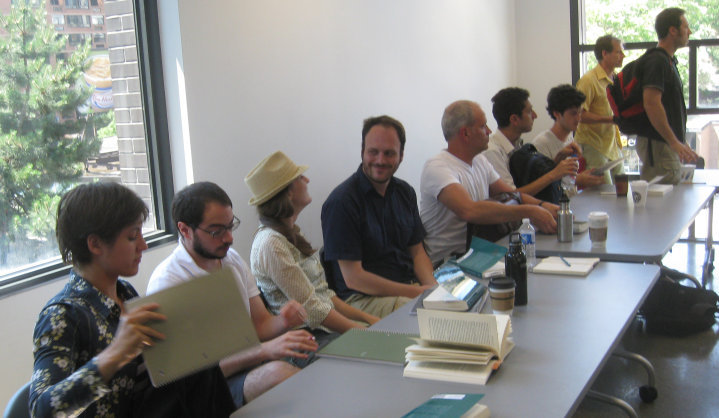
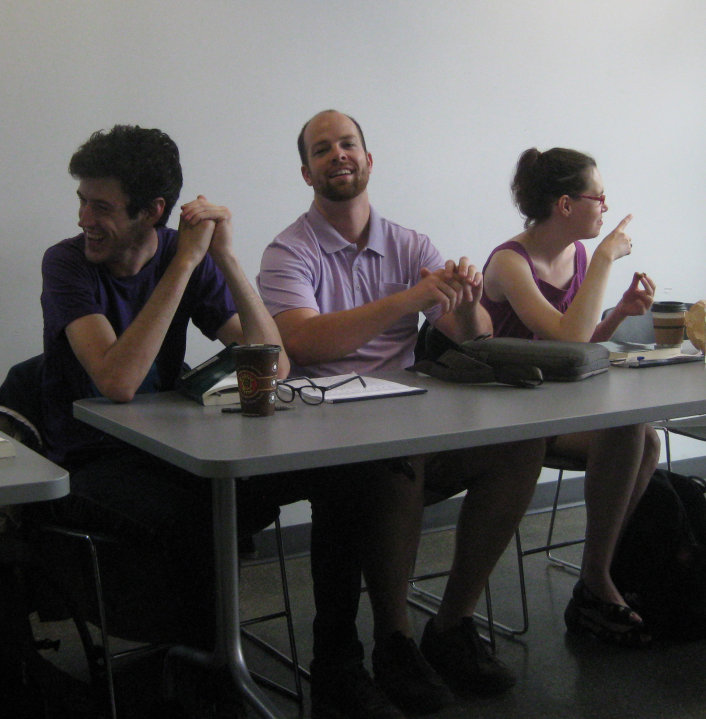 Participants in these
seminars consistently have the experience of growth in their conversation and
conceptual abilities, and typically leave with a transformed sense of the nature
and possibilities of philosophy.
Participants in these
seminars consistently have the experience of growth in their conversation and
conceptual abilities, and typically leave with a transformed sense of the nature
and possibilities of philosophy.

